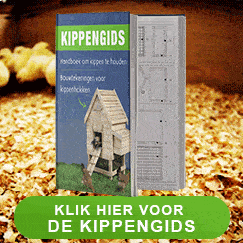The hatching of Japanese quail eggs is a fascinating and fascinating process that requires a lot of attention and care. Japanese quail are smaller birds than conventional chickens, but they are very productive and can lay up to 300 eggs a year.
Incubating these eggs can be a great way to build up your own flock of Japanese quail, which can lead to a sustainable source of food and an interesting hobby.
However, hatching Japanese quail eggs requires specific knowledge, equipment and care to be successful.
In this text, we will discuss various aspects of hatching Japanese quail, from collecting and storing hatching eggs to caring for the chicks after hatching.
Settings for the incubator
The temperature is 37.5 degrees Celsius throughout the 18 days
Humidity is 45% for days 1-14
Humidity is increased to 65-75% during the last 3 days until hatching is complete
Turn eggs for days 1-14, then stop turning eggs for days 15 during incubation period
Step 0: Keeping eggs for incubation
Collecting and storing hatching eggs is an important part of hatching Japanese quail. To get healthy and viable chicks, hatching eggs must be of high quality.
It is important to collect eggs from healthy birds that receive proper nutrition and have a good lifestyle. The eggs should be collected and checked regularly to make sure they are not cracked or damaged.
It is also important to store eggs properly. Hatching eggs should be kept at a temperature of about 15°C and with a humidity of 75-80%.
It is important to turn the eggs regularly to prevent the yolk from sinking to one side and to keep the air chamber in the right place.
Hatching eggs should not be kept for more than 10 days before being placed in the incubator.
By carefully collecting and storing hatching eggs, a breeder can produce healthy and strong Japanese quail chicks.
Step 1: Setting up the incubator
Setting up an incubator for incubating Japanese quail is an important step in ensuring that eggs are incubated properly.
The first thing you should do is clean and disinfect the incubator to make sure there are no bacteria or germs present that could contaminate the eggs.
Next, set the temperature and humidity to appropriate levels depending on the specific requirements of the Japanese quail eggs.
It is also important to rotate the eggs regularly to ensure that the embryos develop evenly.
With proper settings and careful observation, the incubator can ensure that Japanese quail eggs are hatched properly and produce healthy chicks.
Step 2: Place the eggs
Placing the hatching eggs in the incubator is a crucial step in the process of hatching Japanese quail.
It is important to handle the eggs carefully and not shake or drop them, as this may result in damage to the embryos.
Before placing the eggs in the incubator, make sure the temperature and humidity are set correctly.
Then place the eggs in the appropriate holders, making sure they are straight and not against each other.
Also be sure to turn the eggs regularly, say every 4 to 6 hours, to prevent the embryos from sticking to the inside of the eggshell.
With care and attention to detail, you can ensure that the hatching eggs are properly placed in the incubator and produce healthy Japanese quail chicks.

Step 3: Day 1 to 14
During the first two weeks of hatching Japanese quail in the incubator, it is crucial to carefully monitor and care for the eggs.
During this period, the embryos begin to develop and it is important to ensure that the temperature and humidity in the incubator remain consistent.
On days 1 to 14, it is important to turn the eggs at least three times each day to ensure that the embryos develop evenly.
It is also important to check the eggs for any abnormalities, such as damaged eggshells or unfertilized eggs.
With proper care and attention during these crucial first two weeks, Japanese quail eggs can successfully hatch and produce healthy chicks.
Step 4: Day 15 to 18
The final days of hatching Japanese quail in the incubator are exciting and crucial. From day 15 to 18 the hatching of the eggs begins, and it is important to leave the incubator alone and stop turning the eggs.
This gives the chicks a chance to position themselves and break their beaks through the eggshell. It is important to maintain humidity during this stage so that the chicks do not stick to the eggshell.
As the chicks begin to hatch, they should remain in the incubator until they are completely dry and their feathers are well developed.
It can take up to 24 hours for all chicks to hatch, so it is important to be patient and not open the incubator until all chicks have hatched.
With proper care and attention during the hatching stage, Japanese quail eggs can successfully hatch and produce healthy chicks.
Step 5: Outcome
Hatching day is an exciting and satisfying day for any breeder who hatches Japanese quail.
On this day, the fruits of days of careful monitoring and care are brought to life.
As the chicks hatch, it is important to leave the incubator alone and not disturb the chicks. It is important to wait until all chicks have hatched before opening the incubator.
Once all chicks have hatched, they should be placed in a warm and safe environment with adequate food and water.
The first few days after hatching are crucial to the chicks’ survival and it is important to check them regularly for any health problems.
By giving proper care and attention to the hatched chicks, a breeder can build a healthy and thriving flock of Japanese quail.
Step 6: Cleaning
After hatching Japanese quail, it is essential to thoroughly clean the incubator before using it again.
The first thing to do is to remove the remaining eggshells, which can be discarded or used as compost.
Next, the incubator should be disinfected to kill any bacteria and germs present. This can be accomplished by wiping down the incubator with a disinfectant, such as a solution of bleach and water.
It is important to thoroughly rinse and dry the incubator before using it again.
It is also important to thoroughly clean and disinfect all equipment used, such as feeders and drinkers.
By thoroughly cleaning and disinfecting the incubator and all equipment used, a breeder can ensure the health of his flock of Japanese quail and minimize the risk of disease and infection.



